Alaska Fish & Wildlife News
March 2023
Women in Science at Fish and Game
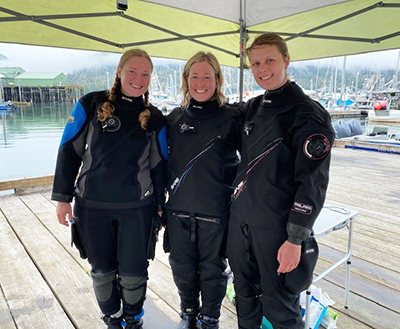
March is Women’s History Month, and we are spotlighting women at the Alaska Department of Fish and Game who are working towards sustainable natural resources in Alaska.
The wildlife field has made great strides in becoming more accessible to women over the decades, and now more women than ever are earning bachelor’s degrees and entering the wildlife field. The progress made is incredible and uplifting, but unfinished. Today, 37% of wildlife biologists in the U.S. are women.
A piece of the puzzle in encouraging younger women into the wildlife management field as statisticians, scientists, administrators, teachers and leaders, is that many may not see examples of people in their field who represent them. A lack of visibility in role models and mentors as inspiration and support can affect who enters the field in the future.
This article came out of a grassroots effort within Fish and Game to showcase some of the amazing women scientists who work at ADF&G and to inspire more women and girls to pursue careers in STEM (science, technology, engineering, and math).
Rhea Ehresmann
Groundfish Project Leader – Commercial Fisheries, Sitka
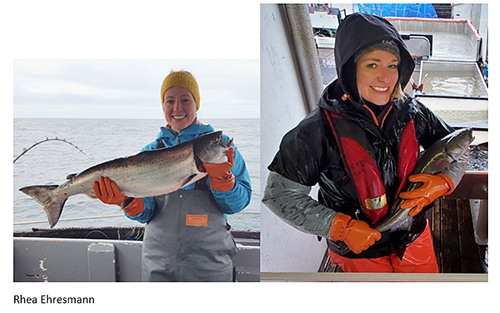
For as long as I can remember, I have been drawn to the ocean. After graduating with a B.S. in biology from the University of South Dakota – about as far from any ocean as you can be – I moved to Sitka for a year of volunteer service and never left. Upon completion of my term, I spent the summer working as a deckhand on board a 45-foot salmon troller. I had no idea what I’d gotten myself into, but I loved being on the water surrounded by all sorts of fascinating life – whales, birds, fishes, and commercial fishermen. While I enjoyed fishing, the biologist in me was wanting to know more. The following season I started working for ADF&G as a Fish & Wildlife Technician 2 doing creel sampling. That kicked off my career with ADF&G, where I’ve worked my way up from a FWT 2 to a Fishery Biologist 3 over the last 13 years.
In my early career as a technician, I learned the foundations of fishery management and research – lots of port sampling, at-sea surveys, data entry, communicating with fishermen, and working with a team of great people. As I advanced to a fishery biologist, my responsibilities grew and I was faced with new challenges: supervising a team of port samplers, opening and closing fisheries, conducting data analyses, writing fishery management reports, participating in Board of Fisheries meetings, and joining the department’s research dive team. In 2019, I landed in my current position, the Groundfish Project Leader for Southeast AK, where I’ve stayed busy with all of the above and more. I have had many incredible experiences working for ADF&G Commercial Fisheries and hope to inspire women who are interested in fisheries. My advice for young people looking to work for ADF&G is to find a great mentor (reach out to us biologists!), gain experience in a variety of fishery projects, push yourself out of your comfort zone, and believe that you can accomplish great things.
Charlotte Westing
Area Wildlife Biologist based in Cordova
In my 20 years as a biologist with ADFG, I’ve seen women come and go. Women are starting to represent the majority of graduates of wildlife programs, but retention of females in the profession remains low. One reason could be the perception that motherhood conflicts with a career in wildlife biology. When I started as an Area Wildlife Biologist, I didn’t know if I wanted a family. Upon realizing I did, I dove in and learned a few things.
Acknowledge limitations and respect them. What can be done varies from person to person and with each pregnancy. Some people stay in good shape and can perform physical work late in pregnancy but may still need to opt out of certain things. I helped collar cow caribou and I drove skiffs at six-months pregnant but I didn’t capture bulls or weigh calves. I flew so late in pregnancy that my pilot waffled between filing a flight plan for two or three souls but I found a replacement for an eight-hour day in a cub when I knew I would have to dehydrate myself.
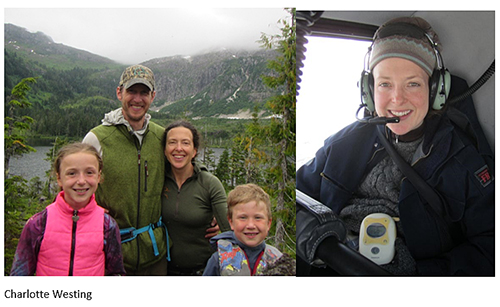
Bring your sense of humor. There may be pumping in planes, helicopters (advise the pilot so they don’t think the pump sound is rotor failure), open skiffs, small boat cabins next to male counterparts, and next to recovering bears, it’s all ridiculous but necessary.
Communicate about what you need. When it comes right down to it, even though there aren’t a lot of mom biologists at ADFG, there are a lot of dad biologists. They are glad you’re there and most of them know a thing or two about supporting women. Being a biologist is amazing and so is being a mom to Sierra (11) and Drake (7). Balancing everything is not always easy but I’m so glad I didn’t have to choose family or career.
Lainey Gallenberg
Biometrician based in Fairbanks
As a Biometrician, my role is to work with the data that ADF&G collects. Mainly, I conduct statistical summaries and analyses after data have been collected. Additionally, I provide assistance when designing surveys before data collection and occasionally, I participate in the data collection itself. I have been working for the Department since June 2022 and have already had the opportunity to work on a wide variety of projects including moose population surveys, investigating moose population trends, estimating caribou survival, and summarizing bear sealing measurements. One reason my role as a Biometrician is gratifying is because of its diversity. It requires me to work with different managers and researchers on projects related to various species, goals, and queries.
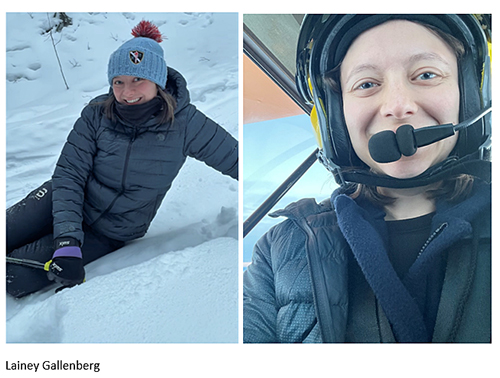
My work with moose population surveys illustrates how dynamic a Biometrician’s role can be. Each fall, biologists perform aerial moose surveys in order to estimate moose populations. Before data collection, I assisted biologists with the sampling design (which and how many units to sample) so that their effort would result in an estimate that was as precise as possible. Then, during data collection, I had the opportunity to fly a portion of the survey, serving as one of the observers who counts the number of moose within the designated survey units Finally, once the data was collected, I used the Geospatial Population Estimator (GSPE) to calculate the estimated population for the specific region of interest based on the surveyed units.
If you are interested in a career in the field of wildlife research and management, one avenue to consider is to specialize in a skill important to the field. Statistics, GIS, computer programming, data management, flying planes, and operating and maintaining equipment are all examples of skills that this field relies upon.
Whitney Crittenden
Fishery biologist based in Ketchikan
I started with the department in September 2019, and it has been the most rewarding career decision of my professional life. As an assistant area management biologist my job duties center around the management of commercial salmon, herring, shrimp, and dive (sea cucumber, sea urchin, and geoduck clam) fisheries and subsistence and personal use fisheries in the Ketchikan management area. The day to day varies immensely and depending on the season I could be conducting salmon aerial surveys flying 60 mph 300 feet above streams in a 185 Cessna, 60 feet below the surface of the ocean on SCUBA counting sea cucumbers, flying a drone to map herring spawn, or sitting in the comforts of my office building database queries to extract data for publications and reports.
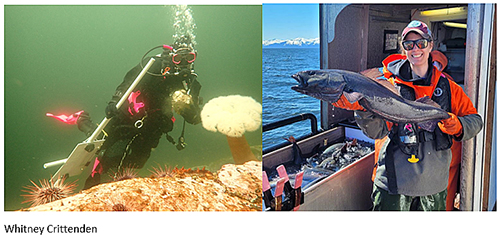
A highlight of my position is being a member of the ADF&G scientific dive team, where I am one of three women currently certified as scientific research divers for the department. Some of my best days on the job have been spent underwater diving. Having the opportunity to participate in collecting the data used to generate biomass assessments and guideline harvest levels for fisheries we manage is incredibly informative from a management perspective. From being bombarded by sea lions, magical moments shared with octopus, and encountering new nudibranch species I have never seen before, there is rarely a dull moment on the R/V Kestrel.
My advice for young women who want to pursue a career in fisheries is to try an assortment of positions and get a variety of experiences while you pursue higher education. I have worked positions ranging from a Bering Sea fisheries observer to salmon otolith reader and coded wire tag crew leader, and each has provided me with value experience I use in my position today.
Asia Beder
Fishery biologist based in Dutch Harbor
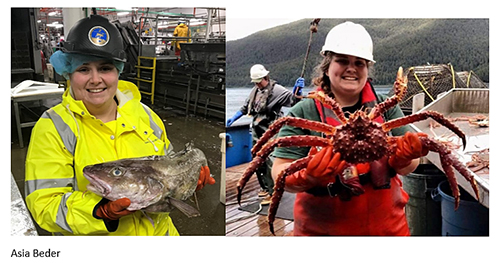 Although I grew up in Wisconsin, I have always been drawn to the ocean. I decided to pursue a science degree after attending a women in science event at a local college and meeting a marine biologist who was studying whale sharks. Looking for an adventure, I moved to Alaska for college and fell in love with the state. I received my Bachelor of Science in marine biology and environment science at APU and after graduation focused more on outreach/education as an AmeriCorps with Alaska SeaGrant. Since then, I’ve jumped around exploring opportunities and living in different parts of the state. I was introduced to the opportunities ADF&G has to offer while working on my masters at UAF in Juneau. I started working for the department in 2015 as a fishery biologist in Petersburg assisting with groundfish surveys and port sampling. In 2017, I accepted an assistant area management biologist position in Dutch Harbor. I currently manage several state-water groundfish fisheries in the Bering Sea-Aleutian Islands including the state’s largest Pacific cod fishery. Although I primarily focus on groundfish I also assist with answering hunting, sportfish, and subsistence questions and providing support to our in-season crab manager.
Although I grew up in Wisconsin, I have always been drawn to the ocean. I decided to pursue a science degree after attending a women in science event at a local college and meeting a marine biologist who was studying whale sharks. Looking for an adventure, I moved to Alaska for college and fell in love with the state. I received my Bachelor of Science in marine biology and environment science at APU and after graduation focused more on outreach/education as an AmeriCorps with Alaska SeaGrant. Since then, I’ve jumped around exploring opportunities and living in different parts of the state. I was introduced to the opportunities ADF&G has to offer while working on my masters at UAF in Juneau. I started working for the department in 2015 as a fishery biologist in Petersburg assisting with groundfish surveys and port sampling. In 2017, I accepted an assistant area management biologist position in Dutch Harbor. I currently manage several state-water groundfish fisheries in the Bering Sea-Aleutian Islands including the state’s largest Pacific cod fishery. Although I primarily focus on groundfish I also assist with answering hunting, sportfish, and subsistence questions and providing support to our in-season crab manager.
My advice to women wanting to get involved in the sciences is to put yourself out there. Attend conferences, find internships, volunteer, do whatever you can to get out and meet people. You never know what opportunities may arise just from saying hello to someone. Also, do not be afraid to jump at new opportunities even if they do not sound like something you would enjoy. You may discover new things about yourself and something you love doing; I know I did.
Sara Germain
Area Wildlife Biologist based in Nome
I'm the Area Wildlife Biologist responsible for overseeing the management of wildlife in Game Management Unit 22: an area roughly the size of the state of West Virginia. I'm originally from Upstate New York, where I got my undergraduate degree in Wildlife Management at SUNY Cobleskill. When I was leaving my job at a local gas station to start my first wildlife technician job, baffled customers often exclaimed: "you're leaving this job to work with BIRDS?!"
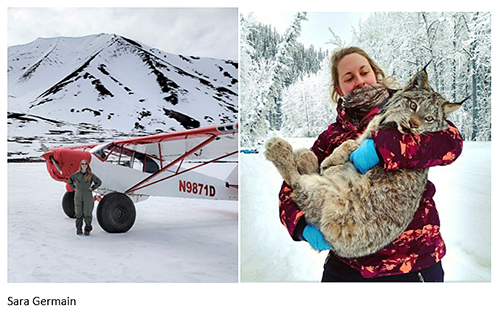
I found my way to the state of Alaska through volunteer positions working with songbirds and lynx. I bounced around rural Alaska working various technician jobs before eventually finding my way to Nome in an Assistant Area Biologist position. Nowadays, my work as the Area Biologist is relentlessly eclectic: some days I spend all day on the phone helping hunters plan a successful trip to hunt for moose and caribou, other days I am hazing muskox away from the City of Nome, and occasionally I am even making trips to the school to teach K-12 students about rabies prevention! Every day it seems like I experience something new, and it is so satisfying to be in a position that is actively making a difference in my community and helps to put food on the table for my constituents.
I have had great success in this field because I am always willing to help with any task. Chopping and stacking a cord of wood or using power tools to help rehabilitate old cabins may not have been in my job description as wildlife technician, but those "other duties as assigned" helped me learn new skills that set me apart from others in the application and interview process, and combined with a positive attitude, ultimately helped me obtain and succeed in my current position. Video: Sara Germain flies a moose survey
Sophia K. Bracio
Fish and Wildlife Technician IV at the Foraging Ecology and Wildlife Nutritional Analysis (FaWNA) Lab, Palmer
As a Fish and Wildlife Technician IV at the ADF&G FaWNA lab, my main job duties are caring for and training the captive caribou and moose at the facility. This work ensures that our animals are prepared for future research projects, through training that is centered around building relationships with each animal based on trust and respect and getting the animals comfortable with their handlers being “all up in their business.” Personally, I enjoy the challenge of these tasks and consider even the smallest breakthroughs to be incredibly rewarding. In addition to animal care duties, I work on research projects, perform lab work, and carry out overall organizational and maintenance tasks at the farm to help keep things running smoothly.
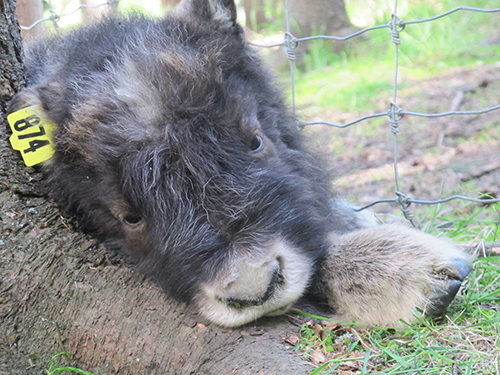
My interest in working with animals began at an early age and I started off with horseback riding lessons as a child, which I still enjoy today. During my undergraduate studies in wildlife biology and conservation at the University of Alaska Fairbanks, I made an effort to work in animal care, with my goal being to work with wild species. In order to do so, I started off at a dog boarding and training facility and later moved on to working with reindeer and muskoxen at the UAF Large Animal Research Station, which was my dream job at the time. I am extremely grateful that I have had the opportunity and privilege to work with a variety of incredible animals. It is an occupation that I thrive in and love. Don’t get me wrong, it is a lot of hard work, but luckily I do not mind going home tired and dirty at the end of the day.
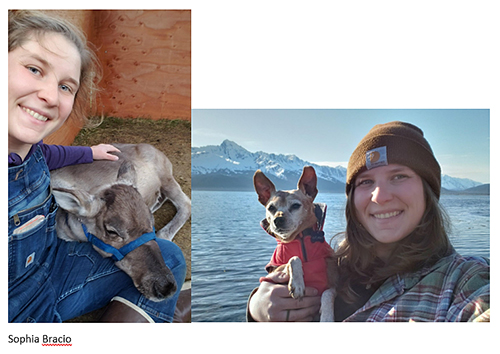
For anyone interested in getting into this line of work, I recommend taking advantage of any opportunities that arise, even if they are not directly related to your specific topic of interest. Additionally, expressing interest and introducing yourself to professionals in the field is a great way to start building relationships that can open doors to opportunities in the future.
Alicia Carson
Assistant Wildlife Biologist based in Nome
I am the Assistant Wildlife Biologist in Nome, AK. I have the pleasure of aiding the State of Alaska in managing wildlife populations, public outreach, and nuisance wildlife calls in Game Management Unit 22.
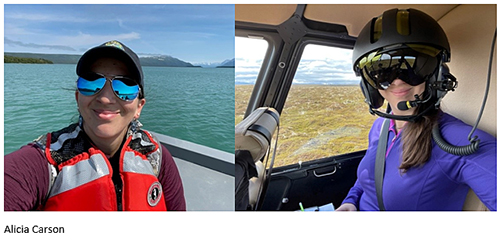
I would have never thought that I’d be moving to Alaska after spending 28 years in Connecticut but all it took was one epic afternoon of hiking in the Chugach. I started to pursue a bachelor’s degree in Natural Science with a GIS minor at the University of Alaska Anchorage. Upon graduating, I accepted a position with the Alaska Department of Fish and Game in King Salmon, where I was the Program Technician. This allowed me to experience the many different facets of working for ADFG, as well as my newfound love for rural Alaska. While flying caribou aerial surveys on the Alaska Peninsula I had some of my best days! The tundra is powerful and thriving with life, our pilots exuded true professionalism while maintaining their childish wonder, while I nervously contemplate “am I doing this right and how did I end up here?” My supervisor would ask me if I was interested in flying surveys, assisting with a caribou necropsy, learning how to radio track, going on nuisance bear calls, I always eagerly said YES! The requests weren’t always a mind-blowing Alaskan adventure but where else could I clean up the compound, mow the lawn, and get eaten alive by the one billion mosquitos of Bristol Bay?
My pursuit of meaningful work and purposeful adventure has now brought me to Nome. I would strongly encourage anyone interested in working in a career where you can be frustrated and motivated by your own passion (as well as your coworkers) to jump into the wildlife conservation field. Seeking to constantly experience the challenges, thrills, and opportunities that working as a biologist has to offer has given me a sense of purpose I don’t believe I could of found anywhere else.
Tessa Bergmann
Fishery Biologist based in Petersburg
I’ve been at Fish & Game for nearly 10 years. I started with port sampling and worked up to my current position, assisting with the management of Southeast Alaska crab fisheries, which includes Dungeness, Tanner, golden king, and red king crab. Now I’m a “crabby” lady and also second generation ADF&G biologist. My Dad’s first year with the state was in 1972. I was born and raised in Petersburg, which is very much a fishing community.
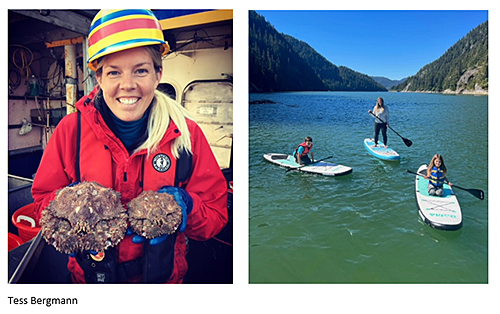
I had the opportunity to work and grow up on my best friend’s parents’ fishing boats; calling them a second family would be an understatement. In summer I tendered salmon, dabbled in herring tendering and commercial fished for halibut, Dungeness, Tanner, red king, and golden king crab. I drove skiffs in the sleeting snow during the herring fishery for (then) Icicle Seafoods. I fished Bristol Bay for three seasons while attending Oregon State University – so it was only natural that I would end up somewhere that would allow me to be out on a boat at least a couple times every year. I’ve always loved being around the water.
The department completes stock assessment surveys in the summer and fall for Tanner and red king crab. My job entails a lot of data entry and attention to detail, but field work is the highlight. Some additional pinnacles of my position include participating in the red king crab tagging study, meeting new people, sunrises at sea, assisting with port sampling, and always learning something new.
I work with a lot of intelligent and incredible women and men around the state, including biologists, fishermen, programmers, analysts, technicians, boat officers, and biometricians. They’re always pushing me to be a better version of myself – in both my personal and professional life.
My favorite sea creature is the box crab (seen in the photo)! They are almost perfectly symmetrical when they close into their box and they’re ridiculously cute. Octopus are definitely a close second since they’re incredibly smart!
Something to pass along that I’ll always hold dear to my heart. My grandpa had a Saturday morning radio show in Petersburg and his sign-off was “above all else, be kind.”
Kathy Smikrud
GIS Analyst - Commercial Fisheries, Juneau
I work as a GIS Analyst within the Division of Commercial Fisheries, providing geospatial support across all four regions of the state. I’ve been working at ADF&G for over 15 years, working initially in several different Fishery Biologist positions (aging groundfish otoliths to instream flow reservations/stream habitat surveys) before migrating to the GIS Analyst role. (Note: GIS, or geographic information systems, are computer-based tools used to store, visualize, analyze, and interpret geographic data.)
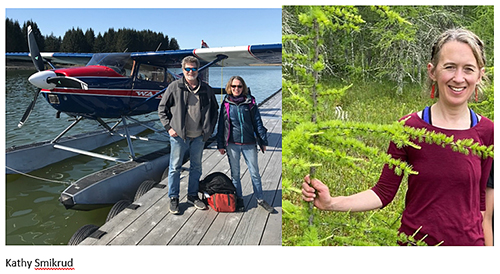
I have always been interested in fish; my interest in fisheries took time. After completing my undergraduate in fisheries in Wisconsin, I moved to Alaska to see salmon and whales, initially working seasonal jobs around the state with the USFS and NPS. I completed a MS in Fisheries from UAF with a remote sensing/GIS component moving into the geospatial support role. Since 2008, I have worked as a GIS Analyst for the Division of Sport Fish and Commercial Fisheries.
I really enjoy working with all the biologists, managers, and programmers on projects all around the state. This diversity of people, projects, and geographic locations and spatial context of fisheries information is really what makes this position so great. I’m constantly learning about fisheries and new ways to incorporate GIS. It can be very challenging at times trying to put all the GIS pieces together for various applications; for example, programming electronic field applications for remote aerial survey data collection and coding/storing data to Department databases and interactive maps. Seeing ideas move from concept to application is super gratifying when all the pieces align. There is SO much unrealized potential for incorporating a spatial view within our fisheries research and management data workflow.
To those considering careers in fisheries or GIS (or both!), recognize the field is expanding and opportunities await. I’m pretty certain when I finished my undergraduate studies, I never thought I would be working as a GIS Analyst, but have truly enjoyed the path and all the experiences to get here. I would encourage everyone to take some programming and GIS classes because those skills are universally important in many professional science/industry career paths.
Brenda Duty
Wildlife Education Curriculum Coordinator based in Anchorage
My great Aunt Tressie was one of my first mentors for engaging the wilderness. She and her sisters instilled a life-long yearning to be close to wild places. They gave me boredom and stillness, application of outdoor skills, fear management, perseverance and stories of endurance, triumph, and lots of laughter.
A family cabin among the lakes of northern Minnesota provided opportunities to experience wildlife as I was growing up. Some years later I found the next best place, Alaska! All those inherited skills came into play while living in a dry cabin raising two teenagers in Fairbanks. My education path began at the University of Alaska Fairbanks in the Natural Resources Management program. I also worked at the (now) Museum of the North as the docent assistant for the education department, where my exposure to the natural history of Alaska’s resources created relevance to the people of Alaska, especially after I switched majors to Rural Development. Part of that education included facilitator training for Project WILD, Project Learning Tree and Project WET. The community of ‘Place-Based Learning’ instructors is a cooperative and open group, who leverage experience and resources to provide high quality programming for Alaska students. It was through this network that I learned of this coveted position with the wildlife education and outreach program at Fish and Game.
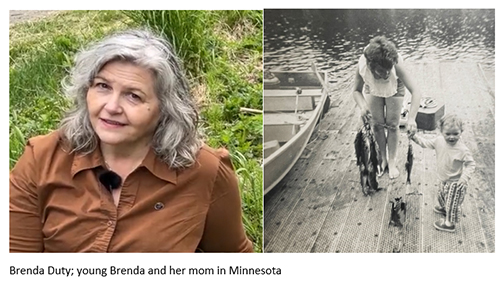
Through this program we have reached hundreds of teachers with professional development and materials for teaching about our ‘place.’ Several school districts use the Alaska Wildlife Curriculum as a model for their own science curriculum. Every year, thousands of students experience science and other disciplines through our education kits and our Wild Wonders magazines. I keep a close eye on changes in school districts, assessing their needs and creating opportunities to address those needs through products and training.
Video: Wildlife Track Casting with Brenda Duty
Carmen Daggett
Wildlife Biologist and pilot based in Utqiagvik
I am the North Slope Area Biologist for GMU 26A. My job is to manage the Utqiagvik (Barrow) Fish and Game office and the Umiat field station as a one-woman office. If it needs done either I do it or help find someone that can help. From answering the phones and customer service to capturing caribou, flying moose surveys, to writing reports, to attending public meetings or sealing furs this job description has a little bit of everything.
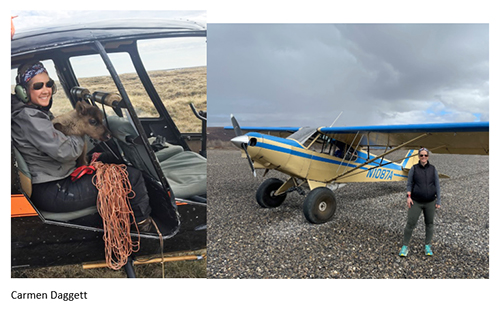
I got a bachelor’s in Biology: Aquatic Science from University of Wisconsin-LaCrosse and my master’s in Ecology and Environmental Sciences from University of Maine-Orono. I had about seven years of field work before I was able to progress to be a lower-level biologist and was able to grow my career from there.
Advice:
1) Get work experience early on while you are still in college, no matter what you must do to get it, cold call, volunteer, work with your professors and advisors.
2) Job shadow - figure out if you are going to school for the right thing and do not be afraid to change course.
3) Check the job market out for what you think you want to do and ask how competitive it is, what sort of education and experience you will need to get a job.
4) Get your foot in the door! If you have a particular entity you want to work for, try to get experience with them even if it is not the same job you might want in the long run. Most jobs require you pay your dues and get to know the inner workings of things before they will hire you.
5) Pick up valuable skills: GIS, mechanical (small engine maintenance, four-wheeler maintenance, snow machine maintenance, generator maintenance and repair), communication, statistics, carpentry, etc. They will not tell you they are useful, but they are extremely helpful and valuable depending on where you are working and how you are getting around.
Arin Underwood is a wildlife biologist with ADF&G’s Threatened, Endangered, and Diversity Program. She works with citizen science projects and supports research on birds and small mammals in Southcentral Alaska.
ADF&G biologist Kerry Nicholson co-authored Women in Wildlife Science: Building Equity, Diversity and Inclusion, with Carol Chambers, published in October 2022. The new book addresses the challenges that women and minorities face in the wildlife profession and is dedicated to making positive changes.
Subscribe to be notified about new issues
Receive a monthly notice about new issues and articles.
